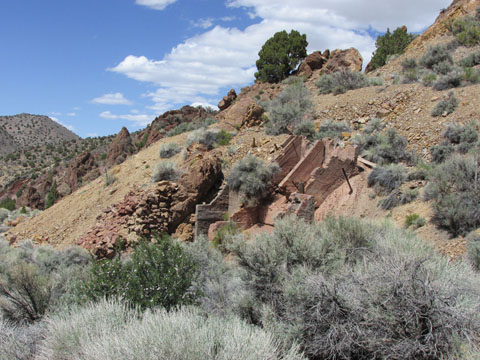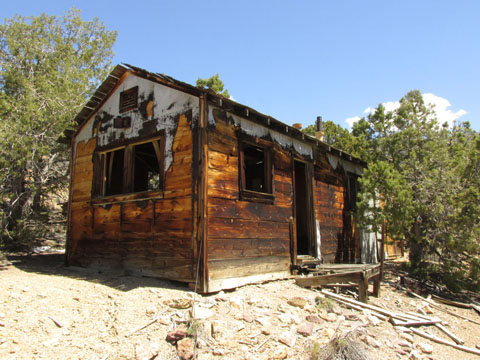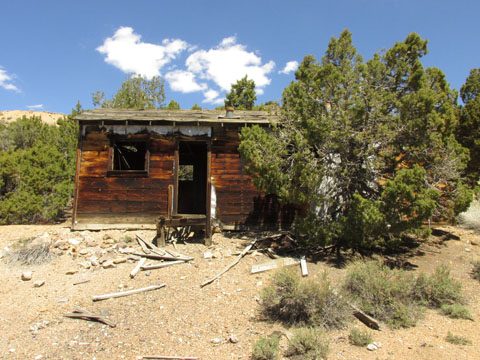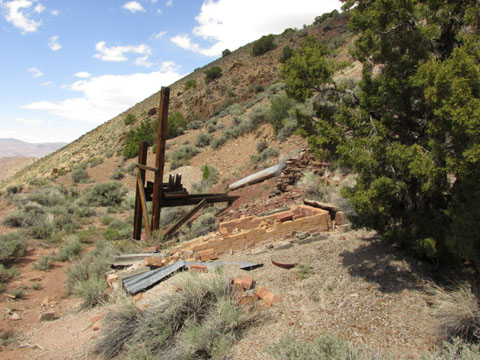Pilot Mountain Quicksilver Mines
Mineral County

Pilot Mountain Mining District
Thomas Pepper and Charles Keough were tracking two stray steers in June 1913, when Keough recognized cinnabar at an abandoned prospect.
The two men staked the Lost Steers group of claims, and others from Mina staked their own claims as well. Production in the district began
in 1915, reaching a peak between 1917 and 1919. Work continued off and on into the 1940s, with the largest producers being
the Drew and Mina mines. The last mine in operation may have been the Moser mine,
named for owner Carl Moser, as late as 1956.
The Lost Steers and Mina mines can both be found on their own pages.
Drew Mine - The Drew mine, originally known as the Red Devils, was located around 1914 by H. Farnham and Al W. Drew. By 1916, Farnham and Drew had produced 180 flasks. In 1917, the mine was leased by the Mina Quicksilver Company, who produced another 444 flasks. In early 1918, it appeared that ore had been exhausted and the Company abandoned their lease. In 1919, Drew, along with Mr. Bugg, resumed work and recovered another 136 flasks. From 1920 until 1943, with 1942 being the only year to produce as much as 20 flasks. In 1943, the Mina Development Company attempted to reopen an incline shaft that had collapsed sometime before 1938.










Reward Mine - The Reward mine was located in 1928 by H.H. Leighton and J.T. Kane. By the 1940s, the property passed through the hands of 13 owners, including an unsuccessful attempt by W.T. Childers to concentrate ore in 1931. In 1942, a 50-foot Cottrell furnace was in use on the property by the Pacific Placers Company.









Keg Mine - The Keg mine, located adjacent to the Mina mine, was located sometime before 1917. Little work was done, and production was never recorder, probably only amounting to a few flasks. It was later owned by the Mina Development Company.










Mammoth Mine - Originally called the Easter mine, the Mammoth was located Easter Day, 1924, by Ed Mace. By September, 12 flasks were produced and soon the mine was purchased by the Mammoth Quicksilver Corporation. By 1942, only 52 flasks had been produced.

Warlock Mine - The Warlock mine was a small mercury producer, but not much else is known.



Warner Corral Spring




Bibliography
- Mines of Churchill and Mineral Counties by William O. Vanderburg (Las Vegas: Nevada Publications, 1988), 97-99.










